










Western sydney University researchers, youth mental health charity batyr, and clinical researcher Dr erin Dolan have released a new report that examines the help young people are providing each other, to better understand the care young people need when facing mental health challenges.
The findings reveal that 94 per cent of those surveyed had direct experience helping a friend through mental ill-health, with young people spending an average of 3.5 hours per week supporting friends. In addition, almost 70 per cent reported that during tough times, they felt most supported from friends, more so than parents or mental health practitioners.
the report, Being there: Young people supporting their friends through tough times, draws on findings from a national survey and focus groups exploring how young people support their friends through challenging times, amplifying the voices and experiences of young people around Australia.

the study highlights the critical work being undertaken by Australian youth and provides insight into the unique expertise of young people, that could foster the development of resources that not only include friendships but build on existing tools to better address services that support youth and address the fundamental issues such as poverty, discrimination, uncertainty that lead to those tough times.
Lead researcher Dr Benjamin Hanckel, senior research Fellow from Western sydney University’s Institute for Culture and society said
the findings were significant as they highlight the role young Australians can play in unlocking better support for youth challenges.
“For the first time, our research shows the ways young people across the nation provide critical support for their peers when they are struggling or going through tough times. Importantly, highlighting how through providing personalised support to their friends, young people are well placed to notice changes in behaviour or mood while having a unique understanding of their friends’ individual needs and circumstances,” said Dr Hanckel.
“By simply ‘being there’ for their friends in their toughest moments, young people create spaces for their friends to be vulnerable. By understanding the benefits of peer-topeer support, we can better address the challenges our youth face and build on this knowledge to foster useful support resources.”
Findings of the report also include improved understanding of the level
of support young people provide to one another. Significantly, they are assisting during tough health and finance difficulties, exam stress and other mental health stressors.
“Young people are going above and beyond by providing financial help, temporary housing, and being strategic in asking specific questions that make it easier for their friends to open up. this is happening in both an online and in-person setting. We need to think about how we best resource young people in acceptable ways, so they have the tools to continue to support friends and manage feelings of responsibility,” said Dr Hanckel.
CeO of batyr, nic Brown said young people care about their peers and communities particularly given the disruptions and uncertainty they experienced in the last few years.
“Friendships are playing a central role in mental health care, with around 70 per cent of this cohort more likely to turn to their peers and friends before their parents or teachers,” he said.
“not only are young people providing ongoing support when friends are dealing with mental illhealth, but they are recognising when friends need professional help too, connecting friends to more formal pathways of care. they are working really hard to support their friends when their access to professional help is limited.”
In terms of professional help, the results have significant implications for clinicians. With clinicians under pressure from increased demand on services due to COVID-19, this study has the potential to support the ways clinicians help young people who are taking on critical roles supporting their friends.
Co-author of the report Clinical psychologist Dr erin Dolan, recognises the important role friendships play in day to day support changes that need to happen to better support youth.
“Young people often feel adults are inexperienced or minimising their issues. the best thing clinicians, parents and other adults can do is to listen without judgement and offer validation and support. Learning to see the world from their point of view is essential to help them navigate their support journey,” said Dr Dolan.
the report makes recommendations developed from discussions with young people and consultations within the sector. this includes that mental health support provision should look to solve youth challenges through youthled approaches and should factor in the expertise of young people and the critical support they are already providing to their friends.
MArLene Miller is a proud western sydney mum of two children with severe autism.
After dealing with the barriers of accessing assistance for her kids as they navigated adolescence – all while managing her own serious health concerns, Marlene is now able to rattle off a stream of accomplishments that her children, Michael and Lauren, have already managed as young adults.
Marlene and her family’s story was a touching highlight of the recent launch of Western sydney Local Health District (WSLHD)’s first Disability Inclusion Action Plan (DIAP), and speaks to the foundations of the plan: empowerment and respect.

The DIAP sets out specific actions to be undertaken across the district to support equitable access to services and employment for people with disability in western sydney.
the plan is split into four pillars:
• Promoting a positive attitude and behaviour regarding disability inclusion
• Creating liveable communities for people with disability
• Providing equitable systems and processes
• Supporting access to meaningful employment opportunities

“the DIAP is a really critical part of who we are as an organisation and as a district,” WsLHD Chief executive Graeme Loy said.
“to have a plan about how we get inclusivity working better is a key part of who we are and what we do. It’s important that this becomes a launching pad for us into the future.
“the greatest measure that I had in
any workplace I’ve been in about how culture works is when parents allow their children to come work with us. If someone says that place is safe enough for my children to work in, I know we’ve done a great job.
“What I’m looking for with this plan is not just for people with lived experience with disability to want to work here, but for their families to say this is a great place for my family to work.”
this sentiment was echoed by Acting District Allied Health Director, Bobbi Henao Urrego, who added that the DIAP is a living document and the
aim is to continuously meet the needs of the community as they emerge.“the DIAP is a hard copy document, but we know that life is ever changing and so this is just the starting platform,” she said.
“We know that things will change from here and we will continue to adapt and grow as we need to.”
For Marlene, the DIAP is an important investment in the skills and independence of people living with disability.
“these children and adults who deal with disability everyday need to be respected and given the chance to find their way in the community, like looking for work and having the life we take for granted,” she said.
“Give them a life. Give them a chance to have that freedom – they have so much to offer. Let them shine because they deserve it.”
to view a copy of the WsLHD Disability Inclusion Action Plan, please go to https://ebooks.cld.bz/ WSLHD-DIAP22

Calling all thought-leaders, changemakers, trailblazers and inspired young people — applications are now open for the Y nSW’s 2023 Youth Parliament.
Young people in years 10, 11 and 12 (or equivalent age) in all 93 nSW state electorates are invited to apply.

as nSW’s premier youth empowerment program operating for over 20 years, Youth Parliament offers young people the opportunity to debate in nSW Parliament, create Youth Bills on issues for change, and have their voices and recommendations heard by Members of Parliament.
Youth Parliamentarians receive specialised training through a series of camps and online workshops, parliamentary education and experience, plus opportunity for community engagement and teamwork which are all designed to nurture participants in developing their skills to create social impact and positive change.
Throughout the program, participants are invited to create reports with recommendations for policy change and debate their recommendations during a mock sitting week in nSW Parliament House chaired by Ministers of Parliament. The Y nSW then actively works to facilitate ongoing engagement with relevant Ministers.
The Y nSW CEO Susannah le Bron commented that the Youth Parliament program provides an important platform to ensure young people are heard.
“Each year i am amazed by the immense passion, intelligence and insight participants bring to Youth Parliament as they speak on issues that are important to them.
“Young people are the focus of everything we do at the Y nSW so it’s incredibly exciting watching participants flourish as they are empowered to engage with civic leadership, policy development and democratic parliamentary debate,” said le Bron.
“if you are a young person in nSW looking for an opportunity to stand up and give a voice to issues that you’re passionate about, i urge you to put in your application for our 2023 Youth Parliament,” she concluded.


To apply to take part in the 2023 Youth Parliament, eligible young people should visit ymcansw.org.au/ youth-parliament and submit their application before 17 February 2023. School teachers and Members of Parliament can also nominate a young person.


Celebrate australia Day with Penrith City Council’s free pool party at ripples leisure Centres at Penrith and St Marys on thursday 26 January, 8am-6pm.
With free entry, locals can relax and cool off while using the popular splash parks and outdoor pools at ripples Penrith and St Marys, as well as enjoy pool toys, games and a range of fun water activities.

Free pop-up yoga and aqua classes will be running throughout the day and entertainment will be provided from the Crazy Scientist who will delight audiences young and old with experiments using giant bubbles. With a DJ spinning summer beats, roving hula hoop performers, and free breakfast and sweet treats, it promises to be a fun day out for everyone. a free bush tucker plant giveaway for the first 200 people will also be on offer. Grown by Muru Mittigar of Dharug Country, the free bush tucker plant is an enduring memory participants can take home from the day to reflect, respect, and celebrate
the history and culture of our local Indigenous people and community.
Penrith Mayor tricia Hitchen encourages the community to join in the celebrations and to make the most of the free activities on offer.
“I hope everyone can join us on australia Day as we celebrate with family and friends at the wonderful ripples leisure Centre facilities at Penrith and St Marys,” Cr Hitchen said.
“Council values running free, inclusive and fun activities that the whole local community can enjoy,” Cr Hitchen said.

this free event is funded by Penrith City Council with the assistance of the australian Government through the National australia Day Council.
Penrith City Council’s australia Day 2023 event is being held on Thursday 26 January, 8am-6pm at ripples leisure Centre – Penrith, 119 Station Street Penrith and ripples leisure Centre – St Marys, Charles Hackett Drive, St Marys.


Find out more at penrith.city/events
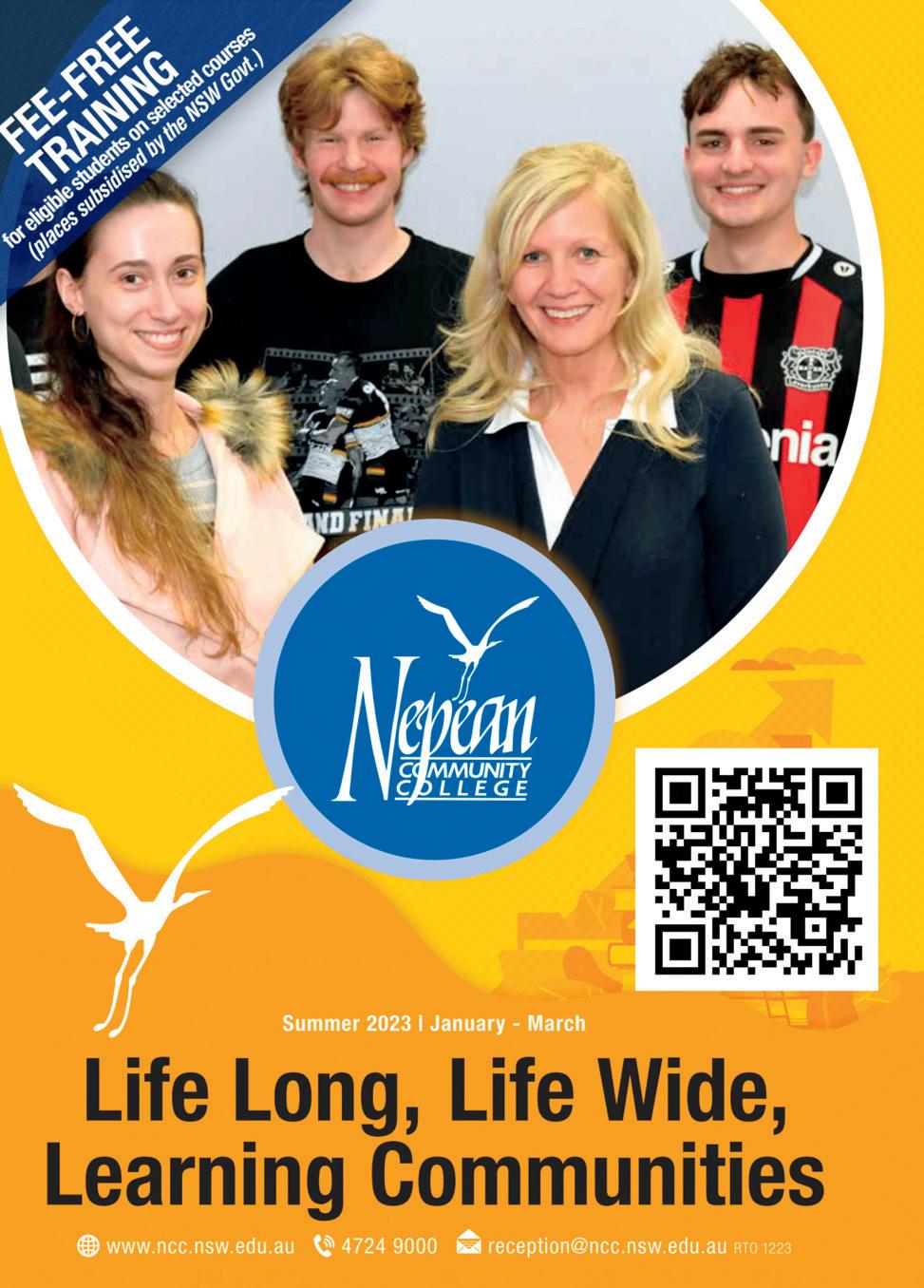

Starting again as the new kid is never easy, but students moving into Year 7 don’t need to go it alone.
High School principal Mechel Pikoulas said the big move was easier if families talked through tips and challenges over summer, including transport.



“Do some test runs to and from school,” Ms Pikoulas said.
“Make sure new students know the school structure and the bell times and have their books and stationery ready.

“Start thinking about routines and what happens after school hours.”
the summer holiday was also a great time to prepare a “clean and quiet study space”.

“Ensure it does not have any distractions, including from mobile phones and televisions,” Ms Pikoulas said.

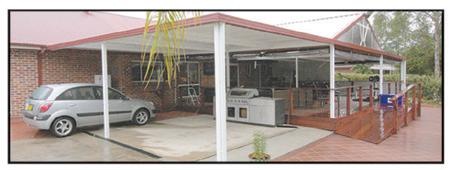
timetables, a diary, folders and a noticeboard would all help a new Year 7 feel organised and confident from day one.
She said it was also a great time to set goals for the year: “What is the one thing they want to focus on as a learner? is it a daily half an hour of revision? an a in English because i am passionate about writing? reading two novels each term?
Extra maths activities online?”
Families could help navigate “pain points”.

“A goal might be to do maths homework first,” Ms Pikoulas said.
“if they are anxious about a deadline, break it down and create a structure: ‘Let’s do 20 minutes each night.’
“the most important thing is talking, identifying the issues and creating a plan.”
Families could support students by knowing the school’s assessment schedule and timelines – and asking open-ended questions every day.
“Daily conversations away from mobile phones
to connect about the learning of the day are critical,” Ms Pikoulas said.
“instead of asking ‘how was your day?’ ask ‘what was great about science today?’ or ‘what did you enjoy in maths today?’
“Set clear boundaries about technology so you can have rich conversations at home.
“Parents have to understand what their children are doing online.”
Being nervous about the transition to high school is normal and schools have year advisors, dedicated wellbeing staff and organised transition teams to help.
Starting school on the very first day is important for learning and to reconnect with friends. regular attendance means students can stay on top of their schoolwork and get the most out of their learning.

Parents best know their child’s strengths and needs and some students might need extra support as they start school. Your school is here to support you and your child. if you have any questions or concerns, talk to your school about how staff can help make the transition to high school as smooth as possible.
Visit the Department of Education’s resource hub designed for parents and carers: education.nsw.gov. au/back-to-school

Top 10 tips for starting high school
1. Do a test run on how to get to and from school 2. Check books and stationery packs 3. Check what time the bell goes 4. Create a quiet study space without mobile phones or televisions 5. Prepare folders, diaries, timetables and noticeboard 6. Plan an after-school routine
Set learning goals for the year 8. Plan for ‘pain points’ 9. ask open-ended questions every day 10. if you child needs support, reach out to your school.
ProfeSSor Richard Yang from Western Sydney University’s School of Engineering, Design and Built Environment and Dr Tosin Famakinwa from the University’s Teaching and research Technical Services are part of a research team that has received prestigious funding from the Commonwealth Scientific and Industrial Research Organisation (CSIRO) for the United States National Science Foundation (NSF) Convergence Accelerator Track I: Sustainable Materials for Global Challenges in 2023.
Professor Yang is leading the research of fabrication, testing, characterisation, modelling, and optimal design of 3D printed recycled thermoplastics as part of a project titled Designing for circular economies: Creating impact from local plastic waste using off-grid containerized 3D printers & practice based learning, which is being led by international 3D printing company, re:3D Inc.
It will join the Convergence Accelerator, which focuses on research addressing the challenges aligned to the manufacturing, reuse and recycling
of critical materials and products.
Professor Yang said 3D printing and its application to the circular economy, or full life cycle use, is critical to developing sustainable, zerowaste designs and manufacturing technologies that can generate positive long-term impact across the energy and infrastructure sectors as well as other essential functions.
“This is an exciting opportunity to develop better processes for utilising existing materials such as local plastic waste and establishing ways to repurpose and redesign this material to give it further longevity and create environmentally friendly practices,” said Professor Yang.
“This solution will advance current processes for manufacturing and using local plastics, with the overall aim to reduce waste significantly.”

The project is one of just two Australian projects that were awarded the funding from CSIRO, joining 14 US awardees in the NSF Convergence Accelerator announced on 19 December 2022.
Over the next nine months, the project will go

through the Convergence Accelerator’s hands-on innovation curriculum, designed to transform the initial concept into a prototype.
The solution will focus on advancing fundamental materials science, including materials design and manufacturing processes; circular design to create environmentally and economically sustainable materials and products; and training methods to prepare the current and future workforce.
“It is exciting to be involved, with everyone coming together to share new ideas and innovative approaches, with the opportunity to create change that can have lasting impact on a global scale. This project is another direct commitment from Western Sydney University to the United Nations’ Sustainable Development Goals (SDGs),” Professor Yang said.
Western Sydney University was named number one in the world for its social, ecological and economic impact in the 2022 Times Higher Education (THE) University Impact Rankings.
This project has been financially supported jointly by CSIRO and the NSF.
The NSW Government’s record investment in NSW Ambulance continues with almost 115 more student paramedics and call takers officially joining the ranks.
Member for Mulgoa, Tanya Davies welcomed the news that a third cohort had joined NSW Ambulance since a record $1.76 billion investment was announced as part of the 2022-23 NSW Budget.
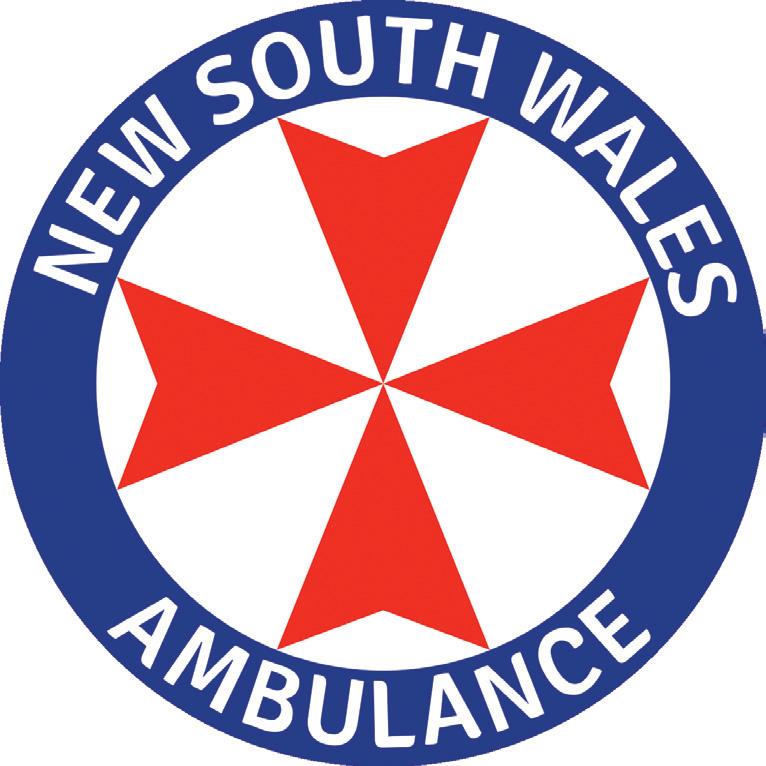
“The NSW Liberals and Nationals in Government are delivering the largest paramedic workforce in the country, with an additional 86 student paramedics and 27 control centre trainees set to join our incredible frontline workforce from today,” Mrs Davies said.
“No other Government in the nation is investing more in health than NSW to try to ease the demand on our frontline workers and ensure better access to services closer to home.”
Student paramedics will be posted to various metropolitan and regional stations for their 12-month practicum before they are then deployed
throughout the state. Call takers will be posted for their nine-week practicum to one of four NSW Ambulance Control Centres throughout the state.
“These new recruits will further enhance the
nation’s biggest and best ambulance service and provide paramedics already on the ground with the support they deserve after an incredibly challenging last few years,” Mrs Davies said.
The NSW Government’s record $1.76 billion investment includes 2,128 funded NSW Ambulance positions and 30 new Ambulance stations. It builds on investments in previous years, including an increase to ambulance workforce numbers by 750 staff over the past four years and 45 new and upgraded stations already delivered since 2011.
In the last financial year, NSW Ambulance transported more than 750,000 patients, more than any other State or Territory, yet it leads the nation in transfer of care results.
The majority of these recruits are part of the service’s new post-employment tertiary pathway, which allows people to complete their degrees in paramedicine while employed with NSW Ambulance as students, working and learning alongside registered paramedics.
The new Sydney Zoo in Western Sydney is celebrating the arrival of an adorable Red Panda, Tashi.
Tashi arrived at Sydney Zoo earlier this week to be the pawfect companion for the zoo’s resident male Red Panda, Pinju.
The precious panda was carefully transported across NSW in a custom build crate and joined by a team of industry experts.
After completing her arrival health check, Tashi spent time bonding with her new zookeepers and exploring her new habitat in Western Sydney.
“Tashi has a lovely nature. She is friendly and very outgoing” said zookeeper, Rebecca Roskilley.
Red Pandas are endangered, with less than 10,000 individuals left in the wild. Sadly, over the last two decades the number of Red Pandas has reduced by 40% because of poaching, hunting
and deforestation.
Tashi will play an important role in educating guests about the challenges Red Pandas face in the wild and what everyone can do to help save her


species from extinction.

See Tashi explore her new home these school holidays at the new Sydney Zoo in Western Sydney.

Small things can make a huge difference when starting big school. after teaching Kindy for 13 years, amanda Monk has simple tips to help that long-anticipated first day – and lunch hour - go smoothly.
The Public School teacher said summer picnics were a great way to learn how to be a legend in managing your new school lunch box. She’s seen it all: yoghurt all over the new uniform, exploding snack packs and little fingers unable to free a plasticimprisoned sandwich. However, ms monk said a picnic was a great way to practise opening containers and wrappings.
“a super handy tip is to use a sticky note to mark where to open a wrapped sandwich,” she said.
“Put a triangle snip at the corner of packaged foods to help open them without bursting and practise opening yoghurt tubes without squeezing.” ms monk said she loved seeing a new crop of “excited little faces” each year.
“They are beaming, being so brave saying goodbye and are so proud of themselves for coming to school,” she said.
Her advice was to embed routines in the summer holidays.

“Start creating those routines to make getting out of the house easier,” she said. “Explain they will go to school every weekday, not just once.
“In the week before, go past the school and say, ‘oh, look, there is your big school and you will be going there on monday; I can see teachers’ cars, they are getting ready for you to come’.”
ms monk says said children could practise introducing themselves and asking for what they need.
“Encourage them to approach other children, say their name and ask if they would like to play,” she said.
Parents should also start to ask their children “what do you need?” instead of “are you thirsty?”. This would help children advocate for themselves at school, she said.
And when the all-important first day is over, Ms monk said parents and carers should ask open-ended questions of their tired big-schoolers.
“Often, they can’t remember what they did that day or who they played with,” she said. “Be specific: ask ‘did you draw a picture today?’ or ‘did you play with new friends today?’”
ms monk warned parents that their children would be exhausted until they adjusted to big school.
“They may be cranky and might sleep in the car,” she said.
Other tips include checking your child can open and close their water bottle, remove and put on their jumper and, if possible, go to the toilet themselves. Practise following instructions and activities that required longer focus, such as reading a book or playing board games.
You can help your child enjoy school by ensuring they attend each day, unless they are sick or absent
for a justified reason. School is the best place to learn and ensuring regular attendance from the start means your child can get the most out of their learning and friendships.
In some schools, Kindergarten students won’t start until a week after the older students. They’ll visit in the first week, meet their teacher and start to build that important relationship. They’ll also undertake some assessments, which helps the teacher understand their literacy and numeracy levels and to get to know them as individuals. all this helps build an effective learning program.
Parents best know their child’s strengths and needs and some might need extra support as they start school. Your school is there to support you and your child.
If you have any questions or concerns, talk about how staff can help make their start a smooth one.
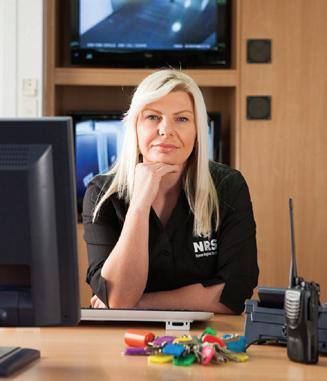

Visit the Department of Education’s resource hub designed for parents and carers: education.nsw.gov. au/back-to-school
Ten things you can do this month to make starting school a picnic
1. Take your soon-to-be Kindy kids on an outdoors lunch to learn how to open containers
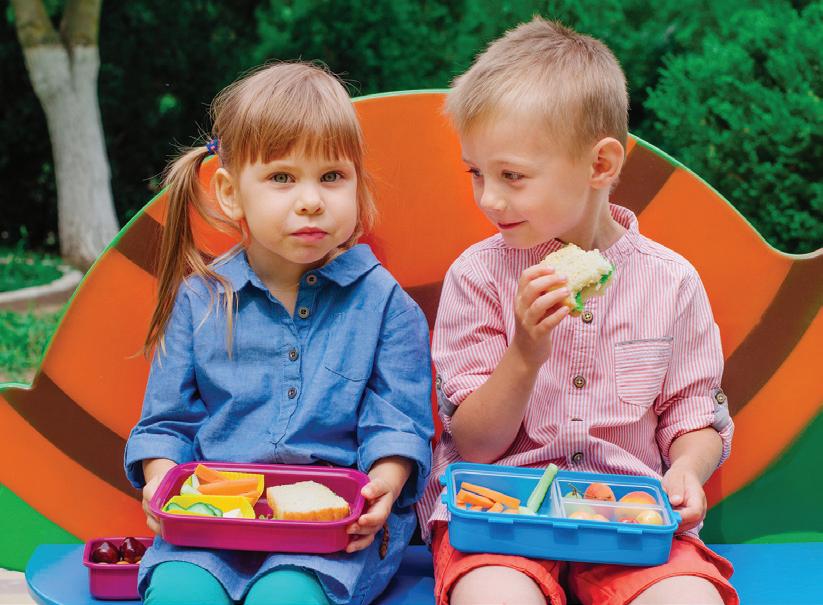
2. Put post-it notes or a mark at the best opening point on the container
3. Put a note or mark where to open wrapping
4. Walk or drive past the school regularly and be positive
5. Remind them they will go to school each weekday, not just on the first day
6. Practise getting up on time
7. Practise morning routines
8. ask open-ended questions: “What do you need?”
9. Practise introducing themselves
10. Practise asking others to play
IS it just me or have people noticed the (Jaws music please) the New Year’s Resolution walkers!?
Run for your lives, they are taking up our streets, roads, footpaths and even parks, they are everywhere, don’t feed after dark or add water.
Yes folks these are the people that you never see all year round, they are like hermit crabs all year and then suddenly......
The one thing I also notice is all the different types of walkers out there.
Mixed Matched walker - The mixed match walker is a person who has never bought fitness gear in their life and it appears that they have replaced an engine block prior to the walk.
The determined walker - This is a person that has the look of pain on their face, like they are passing a large object, however they’re walking slower than a snail. There’s a lot of arm pumping going on but not much distance happening.
The I don’t give a rat’s bum walker - This is a walker that proceeds to kick every stone up along the path and meander like they are heading to work or something.
With Gina Field, Nepean Regional Security
The sweaty walker - This is a walker that looks like they have swum 10 laps and then jumped out of the pool for the evening walk. The sweat beads are pouring out and the t-shirt looks like the last scene of Rocky when he is yelling out for his wife, adrian!
The male bum crack walker - This is a walker that feels the need to wear shorts with no elastic. Their pants are constantly sliding down and they are presenting a crack bigger than a plumber’s.
The Harry High Pants - This is a walker who wears their shorts so high it looks like they need an operation to get them off.
Colour co-ordinated walker - Thank God for these ladies, with matching shoes, socks, tops and of course the lycra pants, with, yes folks, the matching thin colour stripe down the side of the pants. (I hear the angels sing).
Supermodel walker - This is a walker who attends the beautician to have their hair and make-up done simply for their daily walks. These people don’t care if they are getting fit as long as they get 20 thousand car horns beep, they’re happy.
Now I know you’re asking what has all of this crap got to do with security, but alas my dear readers it
has a lot, because I am going to give you walking security tips. So just keep ya knickers on!
Firstly, tell people where you are walking, so when you are not back in 48 hours they know where to come looking. They can also cash in on your life insurance as well.
Secondly, we know how much you love Dolly Parton, but having her screaming at 70 thousand decibels in ear phones is not really good, considering you won’t hear anything or anyone around you.
Thirdly, walk in groups, so society not only has to put up with one of you on the street but 15. (Yippee)
Fourthly, don’t keep checking facebook. Taking selfies on every street corner is not really needed, because to be quite frank we don’t really care that you have decided to walk for two weeks only into the New Year, and it also takes your attention away from what you are actually doing.
So there you have it the NYRW (New Year’s Resolution Walker) not for the faint-hearted folks, this is a trend that you must approach with fear and caution as it only happens at 12.01 on the 01/01 of the New Year - miss the boat and you have to wait another 12 months!
An innovative research program led by Western Sydney University researchers is calling adults over 55 years old to be part of a new pilot program tackling dementia in rural, regional and remote areas.
The Brain Bootcamp Frontiers program, originally founded by Dr Joyce Siette from the University’s MARCS Institute for Brain, Behaviour and Development, aims to improve awareness and decrease dementia risk by providing information and resources to help create and sustain healthy brain behaviours.
The highly successful program is now expanding further into rural areas to reach older people living in the nation’s rural communities who have a higher risk of dementia.


Led by PhD candidate Laura Dodds, also from the MARCS Institute for Brain, Behaviour and Development, the new program has been tailored to support brain health and meet the needs of older people living rurally.
“The risk of dementia is higher for individuals living in regional areas, most likely because the presence of modifiable risk factors in rural areas are much higher than in urban communities, with issues around alcohol use, cardiovascular disease,
and high blood pressure more prevalent,” said Laura.
“This program incorporates evidence-based techniques to support the development of new habits to support healthy ageing. These techniques build on our previous program where we used several different activities to encourage
seniors to tackle different modifiable risk factors to help reduce their dementia risk.”
People participating in the program will have the opportunity to receive a bespoke Brain Bootcamp Frontiers box which contains brain health items and resources to use over the 9 month program.
The box will be provided for free to help them set goals, track, and evaluate their progress and participants will also engage in regular online brain health surveys and memory assessments via telephone.


“We’re hoping this tailored program will have a real impact in reducing dementia risk, and increase dementia awareness in rural communities, including improving cognitive performance in the long-term,” said Laura.
“I would encourage anyone who is wanting to improve their brain function and be dementia aware to sign up and take part.”
A previous Brain Bootcamp participant who lives rurally said of the program: “I had no idea how much an influence different parts of your life affect dementia. Just the practicalities that Brain Bootcamp reminded me of, that’s the type of thing that was really good.”
Brain Bootcamp Frontiers is a research program run by researchers from Western Sydney University and Macquarie University.
For more information and to take part in the program, please visit www.brainbootcamp.com.au Places are limited.

CliniCal Professor Smita Shah OaM is known for her work in education and prevention, and her innovative approach to youth engagement with healthcare in Western Sydney local Health District (WSlHD).
as a full-time Community Physician and the Director of the Prevention Education and Research Unit (PERU), her work includes award-winning programs that have been running in schools for more than 15 years – and have benefited over 50,000 students.
acknowledging the success of these programs, this year Smita was awarded an Order of australia Medal (OaM) for her work in community health.

and with a career at WSlHD spanning over 40 years, it’s no wonder Smita’s contagious enthusiasm for her work has been recognised on such a prestigious national level.
communities, and is currently working on a WSlHD project about the impact of e-cigarettes on young people.

“The concepts of empowerment, diversity and equity are strongly represented in all the work we do in our team,” she said.
“i would like to take this opportunity to thank the executive of WSlHD for their ongoing support.”


as an OaM recipient, Smita says the significance of this achievement is not just about acknowledging past work, but the opportunities this hopefully opens up for the future.
“it gives me a wonderful platform to be able to highlight the work we are doing in prevention in the community and schools,” she said.
“We work in partnerships with schools, universities and with a range of organisations including general practitioners’ associations to deliver evidence-based prevention programs and interventions to improve the health and well-being of young people.
“By delivering evidence-based programs to the community and reducing inequity, we are empowering youth to be agents of change.”
It’s fantastic that my passion for education and research in the community has been recognised. My parents, who arrived in Australia from Tanzania in the 70s, would have been very proud. Professor Smita Shah “








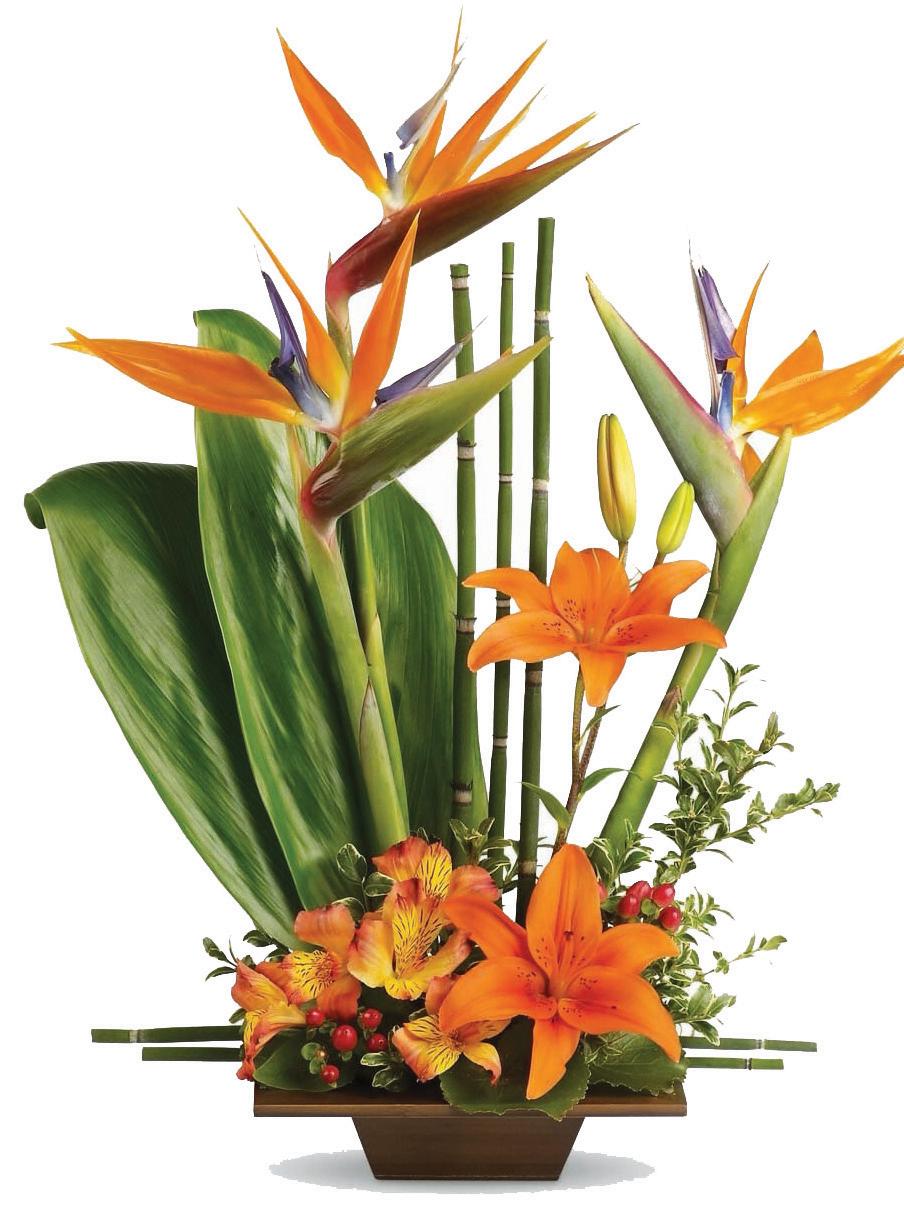

In December 1897 Messrs Richardson and Wrench offered the property “Lenore” belonging to Mr E W P Cox for auction and St Marys tanner Andrew Thompson was the highest bidder at £2,550, later becoming known as the “Lenore Estate”. When Andrew died of a massive stroke at his country property “Tyrone” in October 1918 at the age of 68, his daughter Mary inherited all the household furniture at the time of Andrew’s death. His estate for probate purposes was valued at £26,766. The residue of the estate was left upon trust for the benefit of his widow and his children in equal shares, but in December 1919 the first sale of the Thompson Estate was advertised as township property, shops, cottages, building acre allotments and with each property positioned close to the township and Railway Station. In 1920 the “Lenore Estate” was resumed by the Crown for the “Closer Settlement scheme” a Government scheme whereby land was resumed, then sold back to selectors or returned soldiers who were able to purchase the land on generous terms. The Lenore Estate was subdivided into seven lots of roughly equal size. The subdivisions were designed to enable the settlers to quickly establish themselves as mixed or dairy farmers utilizing existing infrastructure, but the subdivisions on the Lenore Estate did not strictly adhere to the pre-existing boundaries but rather they were configured to incorporate existent outbuildings and dwellings that seemed to account for the odd shape of some of the allotments. “Tyrone” was bought by SecondLieutenant Charles Hely of the 3rd Battalion AIF who returned to Australia in 1917 wounded, and on a war pension. In December 1923 a coroner’s inquest was held into the fire at “Tyrone,”. Charles said he was a dairy farmer residing at “Tyrone” and the deeds were in his name and were being held by the Minister of Land as security under the “Closer Settlement Act” and having 38 years to pay off the purchase money. Charles had an employee, a single man Mr A J McDonald residing with him in the house but at the time of the fire Charles was alone and he was invited to a dance at Hamilton’s at Bailey Park, so he cooked his evening meal at the rear of the premises and because he was late he didn’t wash the dishes but put them under the tap outside. He put some wood in the stove in the kitchen and put some towels in a pot on the stove to boil clean and shut the dropdown door, put his kerosene lamp out and left leaving the doors open apart from the wire doors, leaving in the dark about 8 pm. He walked to Hamilton’s about 1½ miles and it was about 8.30 pm when he got there. He remained there dancing and enjoying himself without leaving the building until about 10 pm when he was told that his house was on fire and he immediately went to the front of Hamilton’s where he had a good view of his house on the hill opposite and saw that the front of the house was burning but he could not see the rear of the property. Charles said that the fire seemed to be burning fiercely on the verandas on both sides but it had not reached the centre of the building in front and he immediately ran as fast as he could in the dark and when half a mile from the house he met Frank “Fletcher” Roberts a neighbour and returned soldier who lived on the “Lenore” estate walking down the avenue away from the fire. Roberts told him it was futile going up there as he couldn’t save anything as the house is burnt out but he took no notice of him and commenced


to run again and ultimately reached the house in tine to save two stretchers and a quantity of bedding. The fire was burning fiercely and the roof of the house and verandah collapsed just then. The fire had died out in the back of the house having apparently burnt out and he put out the tank stands which were burning and saved the tanks that were situated one at the kitchen and one at the rear of the house and removed several things from a shed at the rear of the house in case they would catch alight, which included a can of kerosene, a rifle, service bag, and military gear. Roberts arrived just then and said, “if you are without a bed I will find you one.” But Charles said, “no, thank you I’ll look after myself.” (It seems that Hely and Roberts were not neighbourly and Roberts believed Hely set fire to the house). In the meantime, the tower had fallen down into the house. Charles then walked back to Hamilton’s and met Walter neil Mitchell another returned soldier and farmer at “Lenore” on the way. who expressed his sorrow and offered to befriend him but Charles thanked him and then went on to Hamilton’s and rang up the police to report the matter to Constable Cafe of St Marys who said he would come out in the morning. Charles met him and made a statement at the scene. Charles did not suggest any cause for the fire but said that he left a fire in the kitchen and had been using a kerosene lamp. Charles at that time was camped in a stable at the rear of the premises. The only thing he could say as to the possible cause of the fire was that when they both examined the stove they found the door open, but he had closed it on the evening previous when he left home. Charles bought insurance on 8th April 1920 for a brick dwelling at “Lenore” but not for furniture or effects, and the house was insured for £450 with the Standard Insurance Company and he said that he had signed a number of documents in connection with his transactions with the Soldiers Settlement Board. Before the fire Charles had entered into a contract to sell 29 acres of the land with the premises for £2,500 in cash and 8,500 shares fully paid up to £1 each to the “Tyrone Blue Metal Company” that was proposed to work on his land. Permission was granted by St Marys Council about november to use the road for a tramway but no proposal was made by the engineers for the company to remove that beautifully built dwelling that was totally destroyed that would cost at least, £1600 or £1800 to reerect, and being in a unique position would make it difficult to replace. He had some valuable paintings, originals given to him by the artist norman Lindsay, he also had a gold watch and fob etc, a valuable craft ring given to him by his grandfather, in addition to £17 in notes planted under his mattress. Charles said that the furniture alone was worth over £2,000 and the jewellery, etc., £70, but he could not put a value on the other items as they could not be replaced. He insured the contents of the house for £150 and his burnt clothing was included. The inquest continued for another day. The Coroner viewed what was left of the house and returned an “Open Verdict”.
Information from State Archives - Historical Archaeological Assessment and Heritage Management Strategy: Oakdale Concept Plan Kemps Creek, NSW Prepared by Australian Museum Business Services for Goodman International Limited – December 2007, from the pages of the Nepean Times, National Archives of Australia, Trove.
Sources: Photo of Andrew outside “Tyrone” with two family members in the tower courtesy of Mrs Sales of Luddenham.lenmore Park junior representative golfer Grace lee (Concord GC) has started the new Year in the best possible fashion, capturing the 2023 Harvey norman a.C.T. Week of Golf title with a playoff victory over amy Hodgkins (royal Queensland).
Gamy had led the Girls division from the start of the tournament, despite mixing her form over the first three rounds, whilst Grace played consistent, steady golf to keep within striking distance, ultimately overcoming a 6-shot deficit, heading into the final round, to close out the tournament locked together with amy at 293.
Grace would prevail at the first playoff hole, winning both the overall
Girls’ title and the 16/17 Year’s Girl’s title.
12-year old Camilla kim has recently been recruited by The australian GC and showed her immense potential yet again, finishing at 318 in 17th place overall and an 8-shot winner in the 13 Years & Under age Division.
Darcy mackay (Stonecutters ridge GC) had three strong rounds to lead the Boy’s field after both the second
and third rounds, but a disappointing 78 in the final round would see him drop back to finish tied for 3rd overall - and 2nd in the 14/15 Year’s age Division.

Blake Hodges (erskine Creek / nSW GC) started the tournament slowly and could not make any impression on the leaders over the four rounds, eventually finishing in 44th position overall and 25th position in the 16/17 Years Boy’s Division.



THe Harvey norman Sydney Week of Golf is one of the only 5 day, 90 hole golf tournaments, anywhere in the world and will be played at 5 separate golf courses from 9th-13th January.
Several western Sydney players are entered to play, including Jessica Fog, Brent Gadd and Joshua Bourke (Penrith GC), Hunter mcmillan and Deanna Germali-Chung (Twin Creeks GC), marie-Claire Domingo, Savannah Webb, riley Cleminson, Jackson northey and Darcy mackay (Stonecutters ridge GC), roy Shimm (Glenmore Heritage Valley GC), Ti Fox (richmond GC), Jesse Hardaker (Wentworth Falls CC) and Blake Hodges (erskine Park), who is a member of nSW GC.

The tournament will be played on five different courses in five days, being Cabramatta GC (monday), liverpool GC (Tuesday), lakeside Camden GC (Wednesday), Bankstown GC (Thursday) and Muirfield GC (Friday).
The tournament is limited to 200 players and all players must be a member of a golf club and hold an official 18-hole Golf Australia handicap to take part.
LocaL juniors coby carruthers (Jordan Springs) and Brielle Mapanao (Quakers Hill) have both competed in the prestigious 2023 australian Master of the amateurs championship, which was held at Southern Gc, Victoria from 3rd-6th January.


Playing in a high-quality australian and International field, Coby (a member of concord Gc) started the week in brilliant form, shooting a -3 in the first round to sit inside the Top Ten. A second round 74 placed him in T20th position, followed by a third round 75 which ensured he made the 54-hole cut.
A final round 78 would give him a highly credible 8-over total of 276 and a tie for 42nd spot in the Men’s division.

Brielle is a member of The Australian GC and finished T26 in the Women’s division, following rounds of 73, 81, 74 and 81 for a total of 309.
coby and Brielle are also entered in the australian amateur, which was being held at both NSW Gc and St Michael’s GC from 10th-13th January.
 By Noel Rowsell
By Noel Rowsell
BriSBaNe is hosting the 2023 Hockey australia indoor championships, which are running from 3rd-25th January across multiple age groups.
The Open Men and Women started the event, with current and former Nepean Hockey association (NHa) representatives caitlin Burns, erin Burns, amelia Leard, emma McLeish and Jade close all representing NSW State in the Open Women’s competition, which ran from 3-7th January.
Despite remaining undefeated through the preliminary rounds, NSW State fell 4-3 to VIC in the semifinals, before recovering to defeat QLD 5-3 in the Bronze medal game. Wa defeated Vic 2-0 to win the gold medal.
NSW defeated QLD 7-6, ACT 14-2, TAS 4-1, WA 2-2, NSW Blues 1-0 and VIC 1-0 in the preliminary rounds. Caitlin finished the tournament with 8 goals, Amelia 7, Jade 6, Emma 3 and Erin 1.
The Under 21 divisions were next on the schedule, running from 8th-11th January, with NHA representative annie Buckley playing for NSW Blues Women, coached by NHA’s Melinda Brewin, and the NSW State Men coached by ryan Knowles. The teams finished in 6th

and 3rd positions respectively.
NSW Blues Women lost 1-5 to QLD Maroon, 2-3 to QLD Gold, 1-6 to NSW State, won 3-2 over ACT, lost 3-4 to WA and 0-3 to VIC.
 By
By

The 2023 Paddle Australia (PA) Canoe Slalom Age Championships were held on the Forth River, Tasmania from 6-8 January 2023, marking the return of events for 2023.



The Age Championships continue to foster the community-centric values of the sport each year, offering competitors a unique opportunity to participate in teams and C2 events, as well as the traditional canoe and kayak events, along with the newly-named Kayak Cross, and was held under the partnership of PA, the Derwent Canoe Club and the Tasmanian Canoe Club.
Western Sydney Whitewater Club (WSWC) members in attendance were Dominic Curtin, ewan Mackie, Kevin Songberg, Gary Nelson, Chris

Tubb, Stephen Tubb, emily hogbinBourne and Ada Mackie.
Highlighted results:

Dominic Curtin- Junior Champion MK1 and MC1
ewan Mackie and Dominic Curtin - 1st MC2; Kevin Songberg and Gary Nelson - 3rd MC2 (1st in Masters) ewan Mackie - 3rd Kayak Cross; emily hogbin-Bourne - 2nd Kayak Cross.
The WSWC placed 2nd overall in the ACAWA (Assoc Canoe WA) Champion Club Trophy.
“I like the Forth, it’s really good,” said Dom Curtin. “I like the stopper, you can do some great moves on it. The rest of the course has some opportunities for ‘S’ gates, which we don’t normally do. For me next up is selection in Penrith. Thanks to all the Tasmanians and volunteers who have put in to make this race happen, it’s been a really great race.”

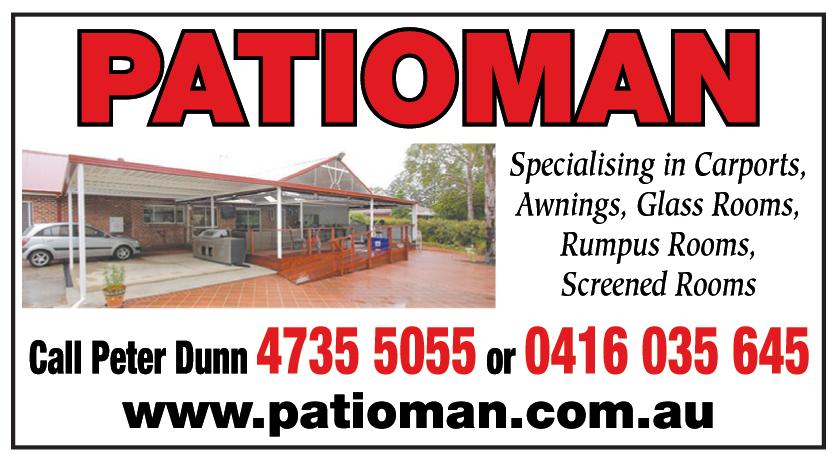

As the winner of both the K1M and C1M Overall Junior Male Champion titles, Dom added “It feels pretty good being the fastest junior, it’s quite nice to have seen other people do that over the years and I have always thought I want to do that, so it’s nice to have that happen. Loving Tasmania, it’s been great fun, I’ve been here for nearly two weeks with the Tassie juniors, just paddling and having fun.”
“This might be my 50th nationals,” said Gary Nelson. “The first was in ‘72 at Wyangla dam. I was pretty happy, fortunately it was fairly easy and I could get all the gates. It will take me a couple of years to get to the next age group from Kevin (Songberg) and actually be ahead, the only time I get to be ahead of Kevin is in C2.”
Shaun Mason, Tasmanian Canoe Club Commodore, said “It has been
fantastic over the last three days, we’ve got a whole range of athletes and people here. I think slalom was last here in 2015, so it’s been a number of years. Due to flooding we’ve had to get the gates put back up and it’s great to see slalom back at Forth. Big hours, mostly pre-work, there was a lot of groundwork to do, we’ve got a big site here at Forth so a lot of mowing lawns and the gates themselves were a lot of work. We have Russell horton to thank for that, he’s been pretty much working out here full-time for the last month and other members have been helping as well, so a big thanks to Russell because it probably wouldn’t have got there without him. Now that we have the gates back, we are focusing on the junior slalom and getting a few more juniors involved in paddling, so hopefully we will start to pop up in a few more national competitions.”

Western sydney Wanderers FC are teaming up with the Australian government to save lives in their local community.
Bowel cancer screening rates are dramatically lower in Western sydney compared to the national average of 44%. screening rates in the West are as low as 29.5% putting people in Western sydney at risk of late bowel cancer diagnosis.
If caught early, more than 90% of bowel cancers can be treated successfully.
the Government is partnering with the Western sydney Wanderers to connect with fans and urge them –or their family members - to do their free bowel cancer screening when it arrives. Australians aged 50-74 receive a free kit in the mail every two years.

Fans attending games will see signage in stadium promoting bowel cancer screening and the club’s players, coaches and staff are going online to urge people to ‘Do the test’ in multiple languages.
the Club will also host local leaders in 2023 from a broad cross section of the Western sydney

community, including representatives from Mosques, churches and migrant groups, to promote bowel screening and normalise doing the test within their communities.
the Western sydney Wanderers are proud representatives of one of Australia’s most culturally diverse communities. Around 2.2 million people from more than 180 different cultures call the area home.
Minister for Health, the Hon Mark Butler MP said the Australian Government was partnering with the Wanderers to promote this important public health program to their extensive fan base.
“the Western sydney Wanderers are great champions for their community and for our national Bowel Cancer screening Program. “their support helps get the
message out that bowel cancer is the third most common cancer in Australia, but early detection, even before symptoms start, will save lives.”
Western sydney Wanderers CeO scott Hudson said that the club was proud to support the Australian Government initiative.
“Community is central to everything that we do as a club and we are very proud to be partnering with the Australian Government to help increase the number of eligible Western sydney residents completing their free bowel screening kit.
“Western sydney is a diverse and multicultural region and it is important we as a club have an impact on our local community that goes beyond football.
We encourage all our members and fans that are eligible to ‘Do the test’, it’s a free and simple process that could save their lives.”
For more information on the national Bowel Cancer screening Program or to re-order a test visit www. health.gov.au/our-work/nationalbowel-cancer-screening-program/ getting-a-bowel-screening-test/ how-bowel-screening-works
when setting the 10-metre defensive line. referees will have the option of awarding a full penalty for multiple 10m breaches without requiring the mandatory use of the sin bin. referees can still use the sin bin if they consider breaches to be deliberate or cynical. the changes will give further clarity to officials and teams around what constitutes a breach of the rules.
Operation of the 18th player rule
By NRL MediaHOWever, the stakeholders requested clarification on existing Interpretations. the NRL has confirmed the following amendments to existing Laws and Interpretations ahead of the 2023 nrL Pre-season and Premiership. the changes are designed to enhance the existing Laws and Interpretations which have led to a faster, more freeflowing and unpredictable game.
AMENDMENTS FOR THE 2023 SEASON
Grounding the Ball tries will now be awarded if the ball rotates from the hand to the wrist or forearm provided there is no obvious separation between the ball and the hand or arm. the new interpretation will allow further clarity for officials when adjudicating grounding.
the number of failed head injury assessments will be reduced from three (3) to two (2) to trigger the activation of the 18th player. this will allow greater flexibility for Clubs which lose multiple players to head injuries in a match.
the Bunker may only intervene for acts of foul play which it deems to be reportable. the change will ensure fewer needless stoppages while also confirming a firmer process around foul play intervention.
A challenge may be initiated after the referee blows his whistle to stop play, rather than only after a decision resulting in a structured restart. Decisions which cannot be challenged will continue to include forward passes, roll balls and discretionary penalties including 10m offside, ruck
infringements relating to play-theball speed, tackled into touch after held call and dissent.
A Challenge can be made following the final play in each half provided the referee has not already called half or full-time. the changes will add further clarity for fans, broadcasters, Clubs and players around when a Captain’s Challenge can and cannot be initiated.

A full penalty will be awarded (rather than a set restart), for off-side scrum infringements by the defensive team anywhere on the field. The noninfringing team will retain the option of repacking the scrum or taking the awarded penalty. Any team which deliberately locks the ball in the scrum to trap defenders in an off-side position will also be penalised.
Active defenders must have both feet in line or behind the referee
Adjudication of completed tackles referees will issue a single call of “held/release” when a tackle is complete, rather than the separate calls of “held” and “release”. the change will address unnecessary slowing of the play-the-ball and improve game continuity.
“While relatively minor, these changes will improve three elements of the game – player safety, the game presentation for fans and off-side compliance,” nrL executive General Manager – elite Football Graham Annesley said.
“We undertook a thorough review of the 2022 season, including consultation with the nrL Clubs, the rLPA and other stakeholders.
“the overriding feedback was the current interpretations are creating a faster and more free-flowing game, but there was a need to address some minor issues which have emerged.
“these changes will allow Clubs and players clarity on certain issues while also giving fans more entertainment and transparency as the game evolves in 2023.”











